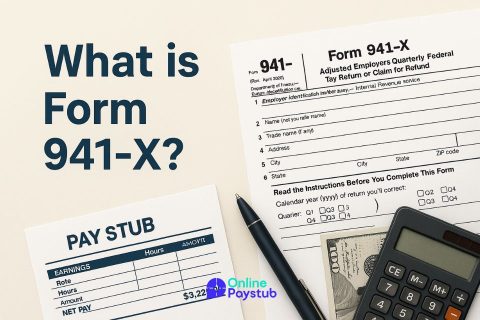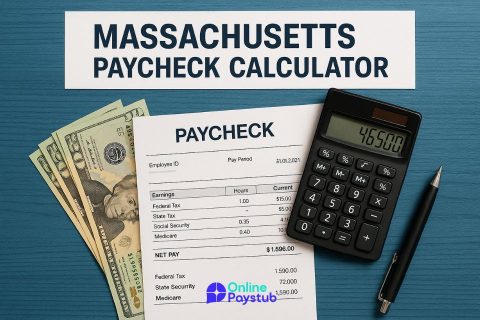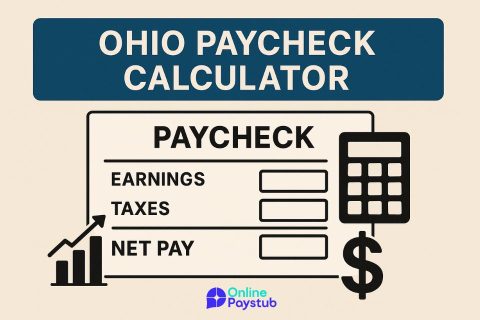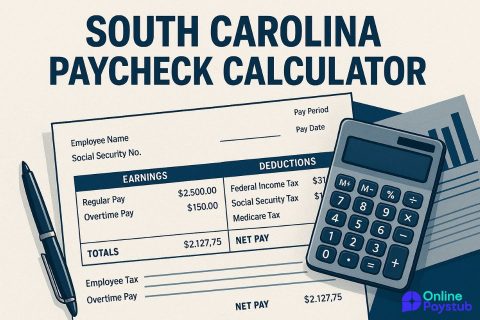If you noticed that no federal income tax was withheld from your paycheck, you are not alone.
This situation can cause confusion and even tax surprises if not properly understood.
There are several legitimate reasons why no federal tax might have been taken out.
This guide explains how tax withholding works, why it sometimes doesn’t occur, and what steps you should take to ensure you stay compliant with IRS rules.
How Federal Income Tax Withholding Works
Federal income tax withholding is a system where your employer deducts a portion of your wages throughout the year and sends it to the IRS on your behalf.
Here’s how the process typically works:
- Form W-4:
When you start a new job, you complete Form W-4 (Employee’s Withholding Certificate) to tell your employer how much federal tax to withhold based on your personal circumstances. - Paycheck Withholding:
Your employer uses your W-4 information along with IRS tax tables to determine the withholding amount from each paycheck. - Annual Tax Return:
The taxes withheld are applied against your total federal tax liability when you file your tax return. If too much was withheld, you get a refund; if too little, you may owe additional taxes.
Proper withholding is essential to avoid unexpected tax bills or penalties at year-end.
No Federal Taxes Withheld on Paychecks Under $600: What You Should Know
You might hear that no federal tax is withheld on paychecks under $600 but this is a misunderstanding.
- Important Clarification:
- The $600 threshold applies to independent contractor payments reported on Form 1099-NEC, not regular employee wages.
- For employees, there is no minimum earnings threshold.
Federal income tax can be withheld even if your paycheck is much less than $600.
- The $600 threshold applies to independent contractor payments reported on Form 1099-NEC, not regular employee wages.
However, if your overall annual income is low enough to fall below the standard deduction ($14,600 for single filers in 2025), little to no federal tax may be withheld especially if you claimed exemptions or allowances on your W-4.
Common Reasons Why No Federal Income Tax Is Being Withheld
Several factors could explain why you aren’t seeing federal income tax taken from your paycheck:
- Low Earnings Relative to Standard Deduction:
If your projected annual earnings are below the IRS standard deduction, no federal tax is required to be withheld. - Incorrect W-4 Form:
If you claimed many dependents or used tax credits on your W-4, your withholding amount could be reduced even to zero. - Non-Taxable Income Sources:
Certain types of income (like some disability payments, scholarships, or reimbursements) may not be taxable at the federal level. - Independent Contractor Status:
If you are paid as a contractor (1099-NEC) instead of an employee (W-2), no federal income tax is automatically withheld. Contractors must pay estimated taxes quarterly. - Employer Mistake:
Though rare, employers can incorrectly process payroll. It’s important to review your paystub and W-4 if you notice discrepancies. - Multiple Jobs:
If you have more than one job and didn’t adjust your W-4 properly, one employer may under-withhold federal taxes.
Understanding these reasons helps you act quickly to fix withholding issues and avoid large tax bills later.
The Risks of Insufficient Tax Withholding on Your Paycheck
If not enough federal income tax is withheld from your paycheck, you could face several financial and legal risks:
- Large Tax Bill at Year-End:
When you file your annual tax return, you may owe hundreds or thousands of dollars unexpectedly. - IRS Underpayment Penalties:
If you underpay your taxes throughout the year, the IRS may charge penalties and interest on the amount owed. - Budgeting Challenges:
A surprise tax bill can strain your finances, especially if you have not saved extra money to cover it. - Difficulty Qualifying for Loans or Aid:
Having outstanding tax debts can negatively affect your creditworthiness and limit eligibility for certain financial assistance programs.
To avoid these risks, it’s crucial to monitor your paystubs and make timely corrections when needed.
What to Do If No Federal Income Tax Was Taken from Your Pay
If you discover that no federal tax has been withheld:
- Review Your Paystub and W-4:
Check your current W-4 form and recent paystubs to understand your withholding status. - Use the IRS Tax Withholding Estimator:
The IRS offers an online tool to help you estimate how much tax should be withheld based on your earnings and tax situation. - Submit a New W-4 Form:
If your withholding is too low (or zero), complete a new W-4 form with updated information to adjust the amount. - Make Estimated Tax Payments:
If necessary, make quarterly estimated tax payments directly to the IRS to cover your tax liability for the year. - Consult a Tax Professional:
If you’re unsure how to proceed, a tax advisor can help you avoid penalties and optimize your withholding.
Prompt action helps minimize any year-end surprises and ensures you stay compliant with IRS rules.
How to Correct Your W-4 Form to Fix Withholding Issues
Fixing your W-4 is one of the fastest ways to correct federal tax withholding problems:
- Request a New W-4 Form:
You can download it from the IRS website or request one from your HR department. - Update Your Filing Status:
If you have multiple jobs or a working spouse, select the correct filing status (“Single,” “Married Filing Jointly,” etc.). - Adjust Dependents and Deductions:
If you claimed too many dependents before, reduce the number to increase withholding. - Add Extra Withholding:
On Step 4(c) of the W-4, you can specify an additional dollar amount to withhold from each paycheck. - Submit the Updated Form:
Return the completed W-4 to your employer. Changes usually take effect within 1–2 pay cycles.
Remember: It’s a good idea to review your withholding every year, especially after major life changes like marriage, divorce, or having children.
What to Do If Your Employer Did Not Withhold Federal Taxes
If you believe your employer made a mistake and failed to withhold federal taxes:
- Speak with Your HR or Payroll Department:
Politely inform them about the issue. Sometimes administrative errors happen and can be corrected mid-year. - Submit a New W-4 Form:
Even if the employer corrects their system, submitting a fresh W-4 reinforces your desired withholding. - Make a Catch-Up Plan:
If withholding cannot be adjusted sufficiently for the rest of the year, consider making direct estimated tax payments to the IRS. - Keep Documentation:
Save copies of emails, corrected paystubs, and any new W-4 submissions in case you need to show your efforts to the IRS later. - Report the Issue to the IRS (if unresolved):
In rare cases where the employer refuses to correct the error, you can report it to the IRS via Form 4852 (Substitute for Form W-2).
Acting quickly protects you from penalties and helps ensure your tax return filing goes smoothly.




No comments to show.